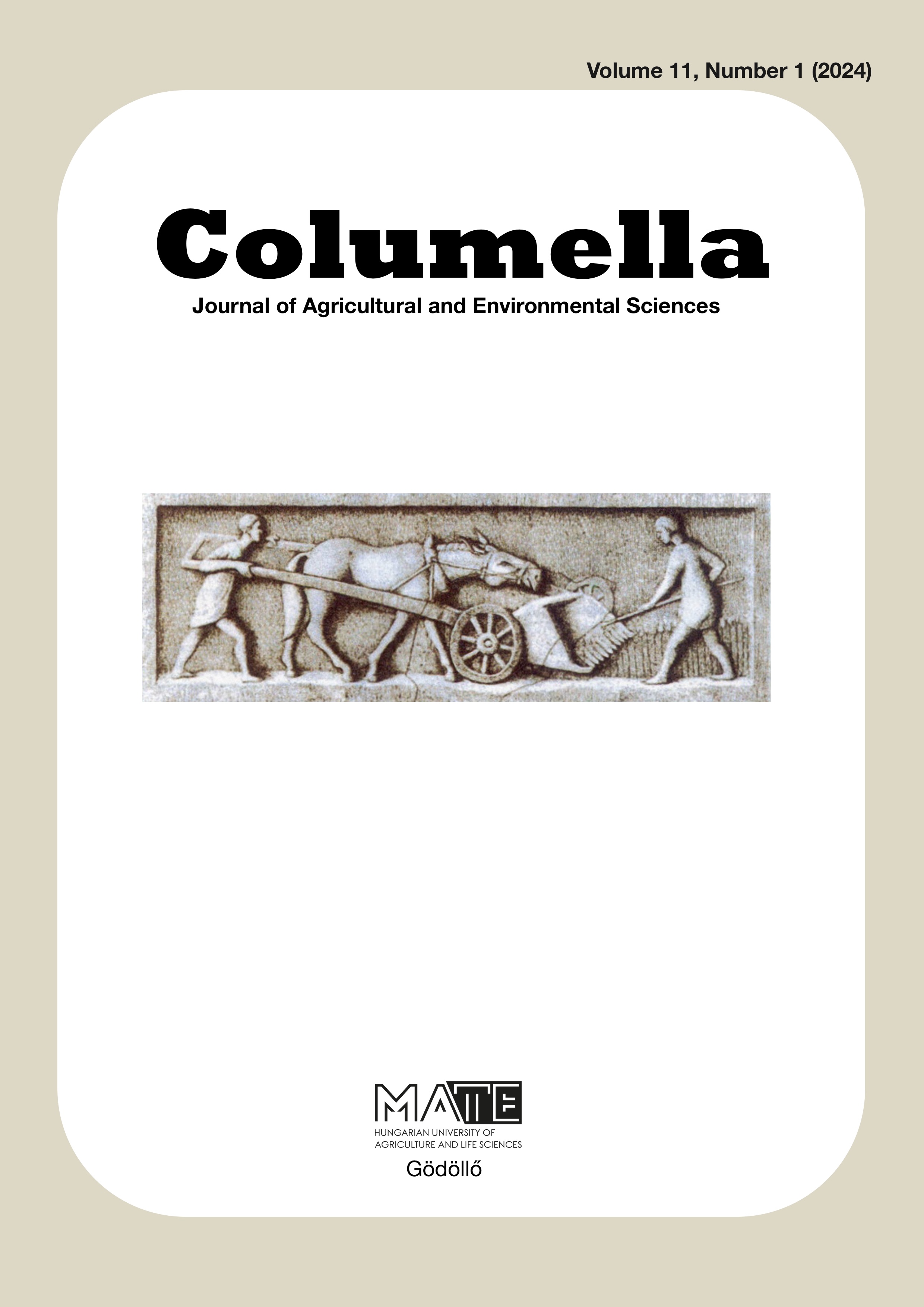Wetlands in Serbia: Past, present and future
DOI:
https://doi.org/10.18380/SZIE.COLUM.2024.11.1.19Keywords:
land reclamation, RAMSAR site, active protection, ecosystem services, inland wetlandsAbstract
Within the territory of the Republic of Serbia, most wetland areas are situated in the north of the state. This is predominantly because of relief features which comprise lowland terrain intersected by the alluvial plains of large rivers such as the Danube, Tisza and Sava. The area also represents the southern part of the Pannonian plain. Extensive works on land reclamation – drainage of wetlands and canalizing rivers, contributed to the formation of large plots of fertile arable land – cultural steppe. Whereas in the 18th century, wetlands were covering 50% of the territory, nowadays remaining wetlands occupy only around 5%. However, these represent significant biodiversity islands and due to this are declared as protected RAMSAR areas of international importance. There are 11 RAMSAR areas in Serbia, of which 8 are in the territory of the Vojvodina Province. Despite protection these are still under pressure from pollution originating from outside borders, climate changes and invasive species. Monitoring water quality at three wetland special nature reserves in the period 2015–2019 revealed that in most cases it was below required water quality standards. In response to these changing conditions, managers of protected areas in Serbia are conducting active measures of protection. Finally, wetlands provide many benefits, and those could be designated as ecosystem services. The concept is helpful for better estimation of benefits, and making comprehensive future planning on how to maximize its benefits and simultaneously achieve sustainability goals. The ecosystem services–based methodology developed during the IDES project, could be useful tool for future planning of management activities.
References
Benka, P., Grabić, J., Ilić, M., Srđević, B., & Srđević, Z. (2022). Koviljsko-petrovaradinski rit Special Nature Reserve (KPR), Serbia. In J. Stäps, A. Gericke, A. Lungu, & B. Stammel (Eds.), Ecosystem services in floodplains and their potential to improve water quality (p. 124-130). Katholische Universität Eichstätt-Ingolstadt. https://doi.org/10.17904/ku.edoc.30670
Brinkman, R., & Blokhuis, W. (1986). Classification of the soils. In A. Juo & J. Love (Eds.), The Wetlands and Rice in Subsaharan Africa. Nigeria: IITA.
CORINE Land Cover (CLC). (2018). version 20.
Davidson, N. C. (2014). How much wetland has the world lost? Long-term and recent trends in global wetland area. Marine and Freshwater Research 65(10), 934. https://doi.org/10.1071/mf14173
Dragovic, S., Maksimovic, L., Pantelic, S., & Pantelic, P. (2005). History of drainage and irrigation in Vojvodina–The Province of Serbia and Montenegro. Integrated land and water resources management in history, German Water History association (), 133-150.
Dragović, S., Maksimović, L., Radojević, V., Cicmil, M., & Pantelić, S. (2005). Historical development of soil water regime management using drainage and irrigation in Vojvodina. Vodoprivreda 37(4-6), 287-298.
for Nature Conservation of Serbia, I. I. (n.d.). Ramsar areas. Retrieved 25.05.2023, from https://www.zzps.rs/wp/ramsarska/?script=lat
Grabić, J., Benka, P., Ćirić, V., Lugonja, P., & Antonić, N. (2016). The assessment of common reed expansion (Phragmites australis (Cav.) Trin ex Steud.) on the Ludaš Lake using Satellite Imaginery. In 6th International Psu – Uns Bioscience Conference IBSC 2016, 19-21st September (p. 131-132). Novi Sad, Serbia.
Grabić, J., Benka, P., Ljevnaić-Mašić, B., Vasić, I., & Bezdan, A. (2022). Spatial distribution assessment of invasive alien species Amorpha fruticosa L. by UAV-based on remote sensing in the Special Nature Reserve Obedska Bara, Serbia. Environmental Monitoring and Assessment 194(9), 599. https://doi.org/10.1007/s10661-022-10273-8
Grabić, J., Bezdan ,A., Benka, P., & Salvai, A. (2011). Spreading and transformation of nutrients in the reach of the Becej-Bogojevo Canal, Serbia. Carpathian Journal of Earth and Environmental Sciences 6(1), 277-284.
Grabić, J., Ćirić, V., Benka, P., & Ðurić, S. (2016). Water Quality at Three Special Nature Reserves in Vojvodina, Serbia: Preliminary Research. In The International Conference Air and Water - Components of the Environment (p. 50-57). Cluj-Napoca, Romania: Babes ̧-Bolyai University. https://doi.org/10.17378/AWC2016_07
Grabic, J., Duric, S., Ciric, V., & Benka, P. (2018). Water quality at special nature reserves in Vojvodina, Serbia. Croatian Journal of Food Science and Technology 10(2), 179-184. https://doi.org/10.17508/cjfst.2018.10.2.05
Grabić, J., Ivošević, B., Ðurić, S., Panić, M., Bigermajer, S., & V., R. (2019). Remote Sensing Method for Assessment of Phytoplankton in Aquatic Environment. In International Conference on
Downloads
Published
Issue
Section
License
Copyright (c) 2024 Jasna Grabic

This work is licensed under a Creative Commons Attribution-NonCommercial-NoDerivatives 4.0 International License.










